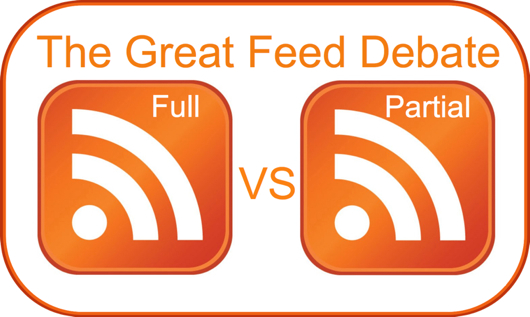 That del.icio.us dominates the social bookmarking space is clear, but by how much? Where do the other players stand? We'll attempt to sort it all out and predict what's coming next for social bookmarking in this post.
That del.icio.us dominates the social bookmarking space is clear, but by how much? Where do the other players stand? We'll attempt to sort it all out and predict what's coming next for social bookmarking in this post.
A year ago in our Social Bookmarking Faceoff post, we looked at the state of the social bookmarking space. In the post, we used several techniques, ranging from counting the number of users who bookmarked a particular post, to counting posts with specific tags, to estimate the number of users for each service. Our conclusion back then was that the market was dominated by del.icio.us and StumbleUpon.
A year later we're passed the hype, StumbleUpon has been acquired by eBay, and during this digestion phase social bookmarking has largely become yesterday's news. In this post, we'll look at what happened to the other players in the space and look into what the future holds for social bookmarking.
Estimating The Number Of Users
We're using one of the methods from last year's post to estimate the number of users for each bookmarking service in this roundup. For each site we counted the number of links to cnn.com and apple.com/iphone (one is old and the other is relatively new) and then normalized using the recently announced number of del.icio.us registered users - 3 Million.

Please note that these are just ballpark estimates to give us an idea. Even between the first and the second data point there are substantial fluctuations. One way to use these estimates is to gauge how much more active some services were last year than they are now. In any case, it is clear that none of the services competing with del.icio.us are anywhere near it in terms of users. The runner up in the bookmarking space is Ma.gnolia, and we take a closer look at it next.
Ma.gnolia - Staging A Comeback?
 When Ma.gnolia launched, it was pitched as a prettier alternative to del.icio.us. Indeed, for people looking for an attractive
site, del.icio.us did not offer much. As time went by Ma.gnolia, like many other social bookmarking sites, discovered that
just being a bit different from del.icio.us is not enough. Yet, ma.gnolia managed to build and retain a core set of users
who are sticking with the service and some that are even coming back:
When Ma.gnolia launched, it was pitched as a prettier alternative to del.icio.us. Indeed, for people looking for an attractive
site, del.icio.us did not offer much. As time went by Ma.gnolia, like many other social bookmarking sites, discovered that
just being a bit different from del.icio.us is not enough. Yet, ma.gnolia managed to build and retain a core set of users
who are sticking with the service and some that are even coming back:

Image from the crawlspace|media blog.
That Ma.gnolia has managed to build a set of active users bodes well for the service. On the day we checked, its front page showed recent bookmarks that were dated that day and in fact, all 11 available recent bookmark pages, encompassing over two hundred bookmarks, were dated that day. Unfortunately there is no deeper history, so its hard to say exactly how many bookmarks are added in a given day. But the users, most of whom appear to be in the web design field, each have a solid number of bookmarks in general. In a random sample, we found no user with less than 200 bookmarks.
Yet, Ma.gnolia still has a ways to go before it can become a major player. The front page is very static and it is hard to figure out how to browse. Unlike the del.icio.us start page, whose hotlist section can drive a significant amount of traffic to web sites, Ma.gnolia's top links are not prominently marked. And the random Google ads all over the site are just plain annoying. Do these really make enough money to warrant their placement? It would be great for someone from Ma.gnolia to comment on that.
Simpy, Furl, Blinklist and Blogmarks - Still Ticking
 Simpy definitely displays activity. According to the site's front page,
people post something new every a couple of minutes - which is pretty intense. Unfortunately, we could not
find a way to loop through all the bookmarks to really confirm. However, the most active user had slightly
over 1000 bookmarks and the 10th most active user had only 200 bookmarks, which is low compared to the top players in this area.
Simpy definitely displays activity. According to the site's front page,
people post something new every a couple of minutes - which is pretty intense. Unfortunately, we could not
find a way to loop through all the bookmarks to really confirm. However, the most active user had slightly
over 1000 bookmarks and the 10th most active user had only 200 bookmarks, which is low compared to the top players in this area.
 Furl also has active members with new posts coming as often as Simpy - every few minutes. The activity per user varied.
Among the random sample of 10 users that we checked there were half with thousands of bookmarks and the other half with just a few.
So there is a core set of users that has been faithful to the service. The site, however, has not evolved since last year, so its difficult to imagine that it is doing all that well.
Furl also has active members with new posts coming as often as Simpy - every few minutes. The activity per user varied.
Among the random sample of 10 users that we checked there were half with thousands of bookmarks and the other half with just a few.
So there is a core set of users that has been faithful to the service. The site, however, has not evolved since last year, so its difficult to imagine that it is doing all that well.
 Blinklist comes across roughly equal to Furl and Simpy in terms of user engagement.
The site exhibits the same sort of activity on the front page. It is more difficult to navigate around, though. Again the site has not changed
since our last faceoff so we have to assume that it is just floating along.
Blinklist comes across roughly equal to Furl and Simpy in terms of user engagement.
The site exhibits the same sort of activity on the front page. It is more difficult to navigate around, though. Again the site has not changed
since our last faceoff so we have to assume that it is just floating along.
 Blogmarks is so painfully slow that it is difficult
to imagine that it is being used. Yet there is activity on the front page. Several users that I had the patience to sample
had thousands of bookmarks, which confirms that some people are using the service. Since each page load took over a minute
there is not much more than I can say.
Blogmarks is so painfully slow that it is difficult
to imagine that it is being used. Yet there is activity on the front page. Several users that I had the patience to sample
had thousands of bookmarks, which confirms that some people are using the service. Since each page load took over a minute
there is not much more than I can say.
del.icio.us and Social Bookmarking 2.0
The image at the top of this post is "After The Battle," by Simon Gaon. It is meant to symbolize that the first battle of social bookmarking is pretty much over. The winner is the company that began the frenzy - del.icio.us. Yet, social bookmarking itself is far from over. It may seem that things are calm now, but this is just the calm before the storm. A new wave is coming.

Earlier this month del.icio.us launched a brand new, completely re-written beta site. Preliminary reviews, including the one written by Richard MacManus, indicate that with their new site, del.icio.us will take social bookmarking to a completely new level. Indeed, the path appears to lead to social networking, recommendation engines, and even search. The first phase of the game was about accumulating information. The second phase is likely to be about leveraging this information to help people discover and find relevant sites faster.
Conclusion
Social bookmarking and tagging started a social revolution and changed the way we live and work online. A truly pioneering service, del.icio.us blazed trails for web 2.0 and remains the winner of the social bookmarking battle. The outcome is that social bookmarking has become the de facto way that people keep track of web sites. It is now part of web infrastructure much like HTML or HTTP.
Beyond igniting our minds, del.icio.us ignited a battle between social bookmarking services. Other companies contributed to innovation, but ultimately could not succeed in capturing the market. But it is never over. New ideas from old and new companies alike are already on the horizon. Today's social bookmarking market may be quiet, but tomorrow is sure to give rise to new twists and spins that will improve upon what we currently use.
*** Update *** We got an email from Diigo pointing out that they are not covered in the post and also providing us with their numbers. Diigo has been doing better than some other bookmarking services that we covered. Specifically, there are 795 links to CNN.com and 15 links to iphone.
Also Diigo is also launching a new version at DEMOFall 2007 and Profy has the coverage.
*** Update *** We got a clarifying email from Simpy clarifying that number of links to CNN is actually over 600. This puts Simpy above Ma.gnolia and slightly behind Diigo for CNN.com links.
 Our post a few weeks ago,
Our post a few weeks ago, 
 It was intriguing for a day or two, but now it's clear that the
It was intriguing for a day or two, but now it's clear that the  Well, this ain't blogging, and we're still getting ready to start a war with Iran, and the stock market is still acting weird, and there are still big ideas out there to pursue, and now Techmeme isn't even worth reading when the top item on a weekday is guaranteed to be some idiot procliaming himself
Well, this ain't blogging, and we're still getting ready to start a war with Iran, and the stock market is still acting weird, and there are still big ideas out there to pursue, and now Techmeme isn't even worth reading when the top item on a weekday is guaranteed to be some idiot procliaming himself  Blog software vendor Six Apart this afternoon posted
Blog software vendor Six Apart this afternoon posted 

 Watch out
Watch out 













 I’ve chosen two speakers for this debate that I think will get a good conversation going. They are:
I’ve chosen two speakers for this debate that I think will get a good conversation going. They are:
 Gina Trapani - editor at
Gina Trapani - editor at  Rick Klau - former VP, Publisher Services at
Rick Klau - former VP, Publisher Services at  button, which currently only seems to be available on Google Video but is likely to be made available for embedding on any website.
button, which currently only seems to be available on Google Video but is likely to be made available for embedding on any website.












